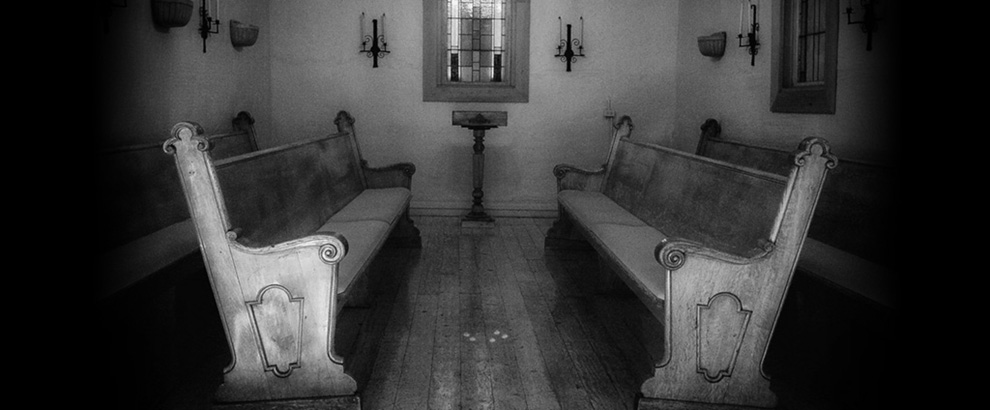
History just keeps confounding us—both as we look back upon it with modern sensibilities (“How could they have???”) and how it unfolds in front of us in real time. (“Could this really be happening?”)
But there’s also an in-between take on history that is the recent past. Viewed more from the vantage point of years rather than decades or centuries, it follows upon daily journalism’s “first draft of history” with enough data and perspective to weave together a more complete picture of issues that have vexed or misled us in the whirlwind of everyday life.
Early this past week, “New York Times” columnist David French, a conservative evangelical Christian, anti-abortion advocate and former attorney who specialized in cases defending religious liberty, did something unusual in the largely partisan world of opinion-mongering. He examined actual data about abortion trends since Roe v. Wade legalized abortion 50 years and 10 presidents ago.
After which he asked:
Who is the most pro-life president in modern American history? Many of Donald Trump’s defenders say that it’s him. The proof, they say, is the Supreme Court’s opinion in Dobbs v. Jackson Women’s Health Organization, which was issued one year ago this week. Trump nominated three of the six justices who voted to uphold Mississippi’s 15-week abortion ban, and three of the five who voted to overturn Roe v. Wade. He was indispensable to the pro-life movement’s greatest legal triumph, and in the months since Dobbs, state after state has enacted or enforced sharp limitations or near-total bans on abortion. So it has to be Trump, right?
If you glean that the tone of French’s leading final question alerts us that it’s probably not Trump, you are correct. But the answer to the question of which other president it is may very well surprise you, as it did me.
***

***
French then goes on to present his metric for “determining a president’s pro-life credentials.” And he does so with the clearest bit of data he can muster.
Not by analyzing how hard presidents pushed for changes to abortion law, or requiring Supreme Court nominees to pass a litmus test on abortion.
Instead, he decided to examine “the prevalence of abortions performed in the United States” during each president’s term(s) in office.
And then, much to his astonishment and mine—and maybe yours, too—“the title of the most pro-life president in modern American history belongs, remarkably, to Barack Obama. It’s not close.”
To wit: research by the nonprofit NGO Guttmacher Institute examined both the abortion rate (the number of abortions per 1,000 women) and the abortion ratio (abortions per 100 pregnancies). Predictably, both spiked higher after abortion was legalized during Richard Nixon’s second term in 1973.
The upward trend continued on through the Ford and Carter administrations before a slight decrease during the Reagan presidency and a continuing steady decline under George H.W. Bush, Bill Clinton, George W. Bush, and Obama.
French points to the Obama era figures in the astonishment that he does because they are a distinct outlier:
“In 2016, at the end of a presidency dominated by pro-choice policies and judicial nominations, there were a total of 874,080 abortions—338,270 fewer than there were in 2008, the last year of the George W. Bush presidency. That’s a remarkable decline of 28 percent. The rate and ratio of abortions at the end of Obama’s second term was actually lower than it was in 1973, the year Roe was decided.”
And then came the Trump presidency, with its explicit promise (which was fulfilled) to appoint only carefully vetted Supreme Court justices who were certain to overturn Roe v. Wade and effectively end abortion access across a sizable portion of the United States. Which those justices have now done.
But before they did, we see that the abortion ratio followed its historical trend by dipping slightly in the first year of the Trump presidency in 2017, only to be followed by steady increases that saw it jump from 18.4% in Trump’s first year to 20.6% in 2020—an overall increase of 12%.
As a result, there were 56,080 more abortions in Trump’s final year in office than there were in Obama’s. And as French points out, those increases began in 2018, so were not attributable to the pandemic.
***

***
That’s a lot of figures, but it’s hard not to notice that most all of them go against the grain of logical expectations.
Deductive reasoning tells us that abortions should increase under an aggressively pro-choice president who manages to keep abortion legal, and then decrease under a president who promises to end abortion.
But sometimes reason runs headlong into intangibles that run reason into the ground. And for French, that intangible was hope—something Obama discussed relentlessly and held out as the key to individual and community well-being.
Trump, with his slashing, angry and grievance-filled ravings against anyone who stood in the way of his lust for personal power, darkened the mood and character of the entire country, and when hope and its future orientation decline, marriage and birth rates go with it, while abortion, depression and suicide all go up.

That is the tale of the Trump years, but as for Obama, what French didn’t get to within the constraints of a newspaper column was the fact that Obama’s hope rhetoric was supported by actual programs aimed at improving the lot of struggling families and the working poor. That cohort has been disproportionately shut out from the spoils of the modern globalized economy, their real wages continuing to decline while the wealthy have benefitted all the more.
***
Herein lies the grievous contradiction of politicians who enthusiastically back abortion bans while consistently voting against other truly “pro-life” measures once life emerges from the womb.
And sad to say, the vast preponderance of those politicians belong to one political party.
Whether it’s universal child care or pre-school, the minimum wage, health care or food assistance programs, Republicans have historically opposed it, on the grounds that such assistance destroys individual initiative and creates an unhealthy state of dependency.
Ronald Reagan made hay out of such stereotypes with his imagery of Cadillac-driving welfare moms, and the rhetoric has only grown more virulent over the decades.
When the Biden administration introduced a variety of measures to alleviate the stresses of working families in 2021, the proposal for universal day care in an early bill elicited this tweet from Tennessee Senator Marsha Blackburn:“You know who else liked universal day care?” Her link took readers to a 1974 article about day care in the Soviet Union.
Ohio Senator J.D. Vance was not to be outdone, tweeting, “‘Universal day care’ is class war against normal people. Normal Americans care more about their families than their jobs, and want a family policy that doesn’t shunt their kids into crap daycare so they can enjoy more ‘freedom’ in the paid labor force.”
The idea that parents (read: “women”) can simply give up their jobs to provide their own child care simply doesn’t square with just how precarious the economic situation is for the working poor. And the idea that child care assistance amounts to “class warfare” is just insane on its merits, a shameful distortion that conjures images of an embattled bourgeoisie manning the barricades against ravenous masses of the poor, the desperate, the dispossessed.
In the end, a true “culture of life” would see every stage of life as precious and worthy of both rhetorical and economic support. Such a culture would ensure that in a land of unparalleled wealth, no person, whether by generational poverty, paltry wages, disability or other circumstance, is ever hungry, ill, unhoused, or barely able to afford the basic necessities of a dignified life.
Such a culture would reflect the ethos of both Bush presidents, whose calls for a “kinder, gentler nation” and “compassionate conservatism” seem to emanate from a completely different solar system than where their storied party’s mainstream flows today.
***
***
Check out this blog’s public page on Facebook for 1-minute snippets of wisdom and other musings from the world’s great thinkers and artists, accompanied by lovely photography.
http://www.facebook.com/TraversingBlog
Deep appreciation to the photographers! Unless otherwise stated, some rights reserved under Creative Commons licensing.
Elizabeth Haslam, whose photos (except for the books) grace the rotating banner at top of page.
https://www.flickr.com/photos/lizhaslam/
Library books photo by Larry Rose, all rights reserved, contact: larry@rosefoto.com
Justice for All by American Life League https://www.flickr.com/photos/americanlifeleague/
Children’s daypack parade by Note Thanun, Thailand https://unsplash.com/@notethanun
Faith, hope, love by Andrew Hidas https://www.flickr.com/photos/andrewhidas/
Obama “Hope” poster from the public domain














History is ripe with contradictions. The 1956 Presidential election clearly illustrates this point. The Democratic Party’s progressive candidate Adlai Stevenson supported the 1954 Supreme Court decision “Brown v. Board of Education” which outlawed school segregation. Nevertheless, he chose Alabama Senator John Sparkman as his running mate, an avowed segregationist who unapologetically supported the 1956 “Declaration of Constitutional Principles”, better known as the Southern Manifesto, a document vehemently attacking not only “Brown v. Board of Education” but also advocating racial segregation in all public places, even drinking fountains. Who did Stevenson run against in 1956? None other than incumbent Republican President Dwight Eisenhower. Although Eisenhower sent U.S. troops into Little Rock to fulfill his Constitutional obligation to enforce “Brown”, it was not a decision he relished. Afterall, in its wake, he remarked, “These (Southerners) are not bad people. All they are concerned about is to see that their sweet little girls are not required to sit in school alongside some big overgrown Negroes.” Despite this comment, Ike won 60% of the black vote in the 1956 election! Go figure.
Robert, to your main point of history’s and pretty much every historical figure’s deep contradictions, trade-offs, compromises and flat-out occasional craziness, I will offer only three words: “The Human Pageant.” :-)
As for Stevenson’r running mate, you’ve got the right guy but the wrong year. (Or vice versa!) Sparkman was Stevenson’s running mate in 1952, and the “ticket balancing” the Dems were after with an avowed segregationist running with the moderate, intellectual (and Unitarian!) Stevenson actually seemed to work in helping them win nine Southern states. Problem was that was all they won, and Ike won by 11 points. In ’56, Stevenson went with the more racially moderate Estes Kefauver instead, but it didn’t seem to help him any—he lost by 15 points and won only six Southern states. (Though he did manage to pluck off the border state of Missouri as well.)
All of which compels me to observe, My oh my, how the electoral maps have changed over time!
Robert, that is an astonishing Ike quote which I haven’t seen before. Can you cite a source for it?
https://www.theatlantic.com/magazine/archive/2018/04/commander-v-chief/554045/
It was a conversation between Eisenhower and Earl Warren re. Brown. Ike was trying to explain to Warren how the parents in the South felt about school desegregation. I would like to add in all fairness that Ike supported Truman’s decision to integrate the Armed Forces.
Thanks for providing the source, and a reputable one at that. I’ve had a generally positive view of Ike, but that’s an appalling thing to say.
Drew, I did mix up the running mates. As you pointed out Kefauver was a more moderate candidate regarding race. For instance, he did not sign the Southern Manifesto. Moreover, his committee investigation into organized crime made him a national figure. Yes, the electoral map in the South has done a 180. The nation as a whole has become so partisan so quickly it’s frightening. The Senate confirmation votes are among the clearest examples of just how far we’ve digressed. Not a single Senator voted against conservative Antonin Scalia (98-0). Ruth Bader Ginsburg was confirmed 96-3. What do you think that vote would look like today?
Oh, there would be ranting & gnashing of teeth and likely somewhere in the neighborhood of 50-50, for sure. And I’d be one of the ranters with Scalia, a supposed tower of intellect who nevertheless embraced the bizarre concept of constitutional “originalism,” which in my view is right up there with biblical literalism in requiring total abdication of the rational faculties we have been blessed with in this world!
So interesting, too, the strange bedfellows electoral politics winds up putting together, ala Stevenson & Sparkman. I’m wondering if Stevenson came to regret what had to have been a difficult reckoning with his conscience in choosing Sparkman. Likely got talked into it by party strategists, but a lot of good it did him—he wound up being the “Southern candidate,” and I doubt very much that he would have felt any affinity with that label!
And while I’m thinking about that, reading up on David French, whom I consider an honorable and principled true conservative despite our many differences of opinion, I discovered his wife is a well-known ghostwriter for conservative causes who wrote…this amazed me….a book for SARAH PALIN as well as her daughter Bristol Palin’s memoir. No idea what might’ve compelled that or how she felt about it then or does now, but it’s hard to fathom.
Andrew, thanks for zeroing in on what French ignored – policies and programs that actually ease the burdens of poverty and lessen the desperation of millions of American men, women, and children. And also for pointing out who, by and large, opposes efforts to strengthen the social safety net for those not reaping the benefits of living in the world’s richest nation.
As for “honorable and true conservatives,” I’d ask them just what do they propose, what are they are willing to do to diminish the horrendous and still escalating economic inequalities in this country. And if they fall back on cutting corporate taxes to spur growth and other trickle down strategies, we’ll know just how honest and honorable they are.
Reverend William Barber (https://www.poorpeoplescampaign.org/) advocates policies and programs that address five interlocking injustices in this country: poverty, racism, environmental devastation, militarism, and the distorted moral narrative of religious nationalism that serves as a rationale for the other four. But above all he calls for a national moral revival to generate the commitment, courage, and sacrifice needed to end poverty. Poverty leads to the deaths of thousands and thousands of Americans each year, but I see precious little talk among either Democrats or Republicans about this. And ultimately it is a moral issue – as is our failure to abolish capital punishment or to provide all people with health care or to address climate change. I’m not sanguine about the chances for that moral revival in 2023, but I’m hoping Nelson Mandela knew something true when he said, “It’s never too late to do the right thing.”
I can’t really say what Mr. French’s proposals might be for addressing economic inequalities, David, but you have inspired me to ask him! I’ll let you know if I get a response. I will say this, however—he is one conservative I read regularly because he seems to come by his conservatism without any patina of hostility, cant or, Lord helps us, MAGA rhetoric that regards anything to the left of Trump as beneath contempt. Given the bulk of the Republican electorate’s dramatic extreme rightward shift since Trump, French pronounced himself an Independent in 2018. My take on him is that he always explores data, nuance and his foundation in actual Christian living in his columns, inclusive of the faith, hope, humility & charity that seems to have fallen by the wayside as evangelicalism took on a muscular, harsh and judgmental edge the past couple of decades.
As for Rev. Barber, couldn’t agree more on the power of his prophetic voice. Posted on him here, way back in 2016, when he burst upon the wider cultural landscape with his stemwinder of a speech to the 2016 Dem Convention: http://andrewhidas.com/reverend-william-barbers-ancient-progressive-religion-of-the-heart/
Great analysis.